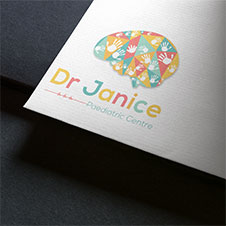Websites are no more just a place where people find your business, it’s the face of your brand and key for your success. Whether you’re a start-up, a small business, or a personal brand, creating a stunning and functional website is essential for building trust, engaging your audience, and growing your business.
But where do you start? Website design and development is not just adding a few pages together. It requires a careful analysis of the business and target audience along with creativity, strategy and technical know-how. This is where hiring a freelance web designer can make a good difference. Freelancer web designers’ expertise, flexibility, and personalized approach ensures your website stands out.
In this blog, we’ll break down the 7 essential steps to web design, giving you a clear roadmap to creating a website that not only looks great but also delivers results.

7 Essential Steps for Website Design
Step 1: Planning and Goal Setting
Successful website design begins with careful planning. Your freelance web designer starts your website design by clearly defining the goals, understanding your audience and outlining your website’s structure.
Your website designer plays a crucial role by asking the right questions through a website design questionnaire and aligning the design process with your objectives.
Key Activities in Step 1:
– Define Your Goals: What do you want your website to achieve? Clarity is key, whether it’s increasing sales, showcasing a portfolio, or building a blog, and analysing the website’s purpose is essential.
– Identify Your Audience: Who are your target users? Understanding their needs, preferences, and pain points will guide the design process.
– Competitor Research: Analyzing competitors helps you identify industry trends and opportunities to differentiate your site.
– Create a Sitemap: A sitemap is a blueprint that outlines the structure of your website, including the pages and their hierarchy.
Why This Step Matters:
Proper planning sets the foundation for a successful website. Without clear goals and direction, your website may lack focus and fail to convey the message to your audience.
Step 2: Wireframing and Prototyping of your Website
When you are done planning the website, the next step is wireframing and prototyping. Your freelance web designer in Singapore will create the website layout and functionality in this step, with your active participation and feedback.
Key Activities in Step 2:
– Wireframing: A wireframe, a visually engaging low-fidelity sketch, outlines the placement of elements like navigation menus, buttons, and content sections.
– Prototyping: A prototype is a more detailed, interactive version of your wireframe that allows you to visualize the user journey.
– Feedback and Revisions: This is where client input is important. Timely feedback of the layout is important, discuss with your freelance web designer to refine the designs. Based on your feedback the designs are revised.
Why This Step Matters:
Wireframes and prototypes act as a roadmap for the website design process, helping you visualize the final output and make adjustments early on. This saves time and ensures the design meets your expectations.

Step 3: Visual Design and Branding
The website design stage focuses on creating a website that reflects your brand identity and captures your audience’s attention. A skilled freelance web designer Singapore will combine creativity with branding expertise to bring your vision to life. The wireframe and layout stage will be combined with the visual design and branding step.
Key Activities in Step 3:
– Color Scheme Selection: The tone of your website is set with the usage of colors. Typically, colors evoke emotions. Colours are determined during branding, and using brand colours in the website ensures consistency.
– Typography: Fonts play a crucial role in readability and aesthetics. The designer will select fonts that enhance your content and branding.
– Imagery and Graphics: From high-quality images to custom illustrations, visual elements are incorporated to make your website visually appealing.
– Brand Consistency: The design will ensure your website aligns with your logo, marketing materials, and overall branding. You could get in touch with our Logo Design Singapore Designer for a brand logo.
Why This Step Matters:
A visually stunning website builds credibility and leaves a lasting impression on your website visitors. It ensures your brand stands out in the competition.
Step 4: Content Creation
Content creation according to user search and helpful information. Content is king, and your website’s success depends mainly on the quality of the content we use. Your freelance web designer can also help with SEO optimised content that goes well with the design layout.
Key Activities in Step 4:
– Copywriting: Write clear, engaging, and SEO-optimized content that highlights your value proposition.
– Visual Content: Add high-quality images, videos, and infographics that enhance the user experience.
– Call-to-Actions (CTAs): Strategically place CTAs to guide users toward desired actions, such as signing up for a newsletter or making a purchase.
Why This Step Matters:
Great content informs and engages your audience and improves your site’s search engine rankings. Your freelance web designer can ensure the content layout is visually appealing and conveys your message.
Step 5: Development and Coding
After finalising the pages’ layouts, your freelance web designer will begin the process of coding the website. At this stage of development no alterations are allowed as they would extend the web design timeline. Quite simply, a freelance web designer ensures that your site works, serves its purpose and is well tuned.
Key Activities in Step 5:
Front-End Development: Bringing your website’s design to life by coding its visual elements, like layouts, buttons, and navigation menus.
Back-End Development: Setting up the behind-the-scenes systems, including servers and databases, to ensure your site runs smoothly and efficiently.
Mobile Responsiveness: Making sure your website looks amazing and works perfectly on every device, from smartphones to tablets.
Bug Testing: Checking for and fixing any technical issues so your visitors enjoy a seamless and hassle-free experience.
Why This Step Matters:
A well-coded website ensures fast loading times, smooth navigation, and compatibility across browsers and devices. This step is crucial for creating a professional and user-friendly online presence.
Step 6: Testing and Quality Assurance
Before launching your website, it’s essential to do thorough testing on every aspect of the webstite to ensure it’s error-free and ready for visitors. Your freelance web designer will thoroughly test to identify and resolve any issues.
Key Activities in Step 6:
– Functionality Testing: Functionality testing will help to ensure all features, such as forms, buttons, and links, work as intended.
– Cross-Browser Testing: Checking that your newly developed website functions correctly on various latest browsers like Chrome, Safari and latest versions of browsers.
– Mobile Testing: Verifying your site is fully responsive and optimized for mobile devices. Optimal display of the website in devices is essential for SEO.
– Performance Testing: Page load times and optimizing website speed to improve user experience.
Why This Step Matters:
A through testing ensures your newly developed website delivers a good user experience, minimizing the risk of errors that could frustrate users and reduces conversion.
Step 7: Launch and Website Maintenance
This is the last step of the website design process and it’s time to launch your website. But the process doesn’t end here. Ongoing website maintenance is crucial to ensure your website remains up-to-date and performs at its best. Continuous maintenance of the website is crucial as internet is vulnerable to hacks and also content updation according to user search is important to stay up to date.
Key Activities in Step 7:
– Launch Day Checklist: Freelance web designers have a list of items to ensure all elements are live and functioning correctly before the official launch.
– SEO Submission: Your website needs to be submitted to search engines like Google for indexing.
– Analytics Setup: Use tools like Google Analytics to monitor your site’s performance and user behavior. Analytics set up are free of charge with Subraa’s website design services.
– Regular Updates: Your website needs to be fresh with content and technical updates.
– Security Checks: Protect your site from vulnerabilities by installing plugin updates regulary and monitoring security measures.
Why This Step Matters:
A well-maintained website remains relevant, secure, and effective in achieving your business goals.
Successful website design and development requires more than just technical skills. Website designs require creativity, strategy, attention to detail and an understanding of the local and international markets. By following these seven essential steps to web design, you can create a stunning website that drives results for your business.
You can hire Subraa, freelance web designer Singapore to ensure every step of your website design is executed flawlessly. Subraa is a trusted name in web design services in Singapore, offering personalized solutions tailored to your brand’s unique needs. From planning and prototyping to launch and maintenance of the website, Subraa’s expertise guarantees a website that boosts your online presence and sets you ahead of your competition.
Ready to bring your vision to life? Contact Subraa today and take the first step toward a professional and impactful website!
















